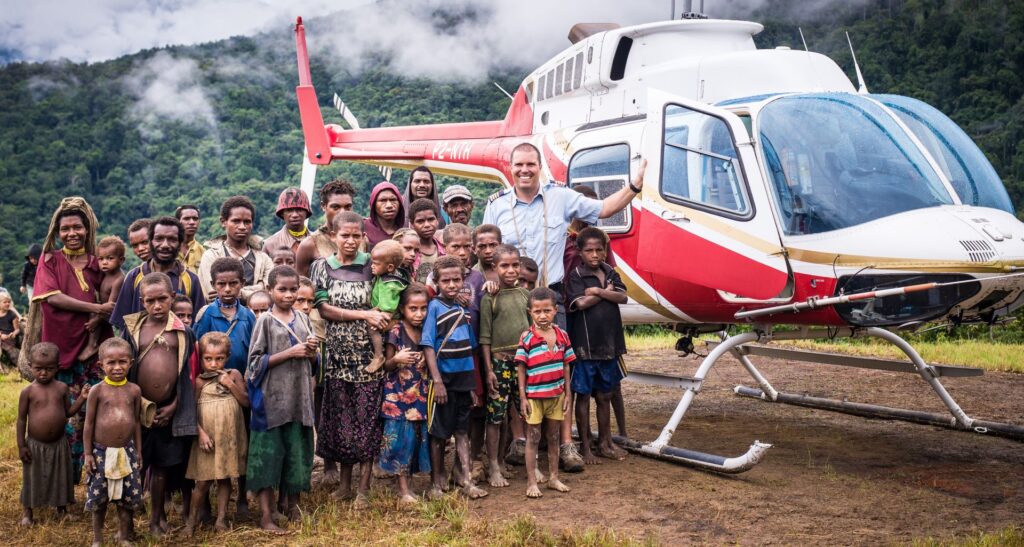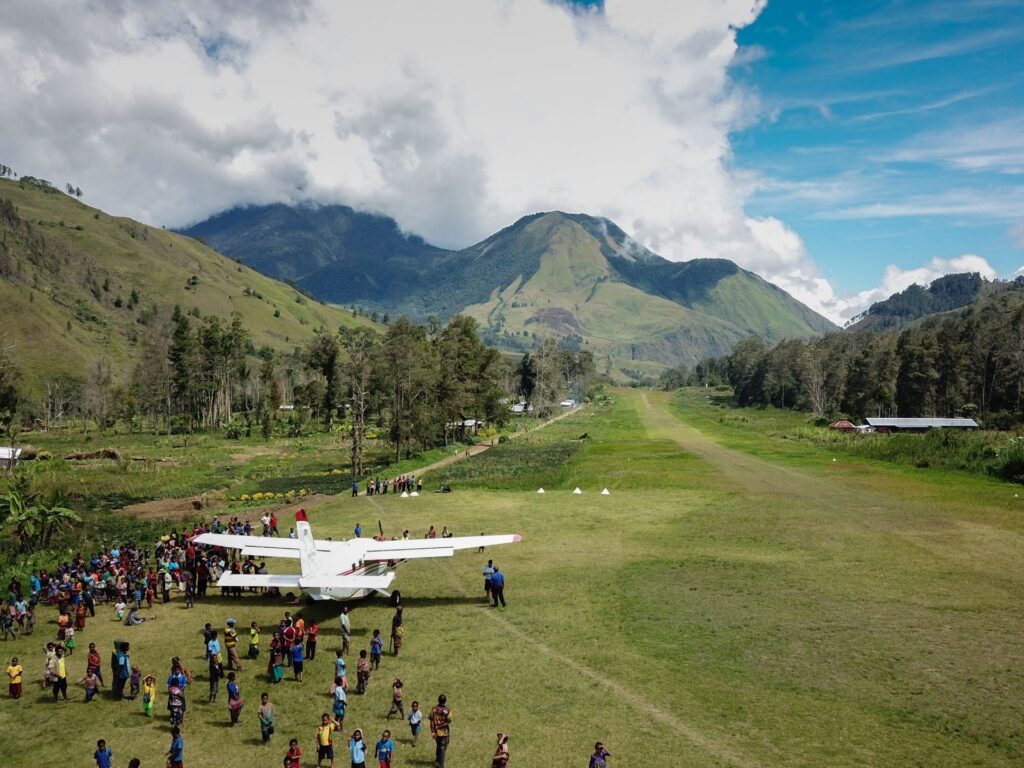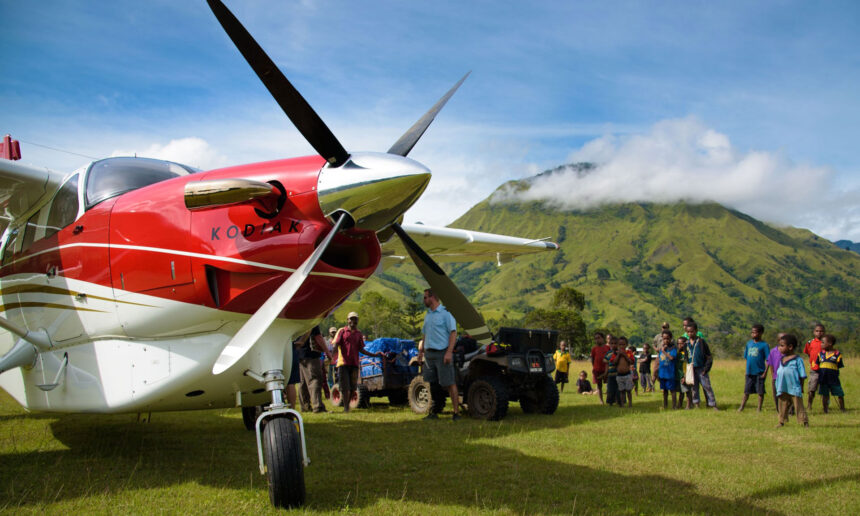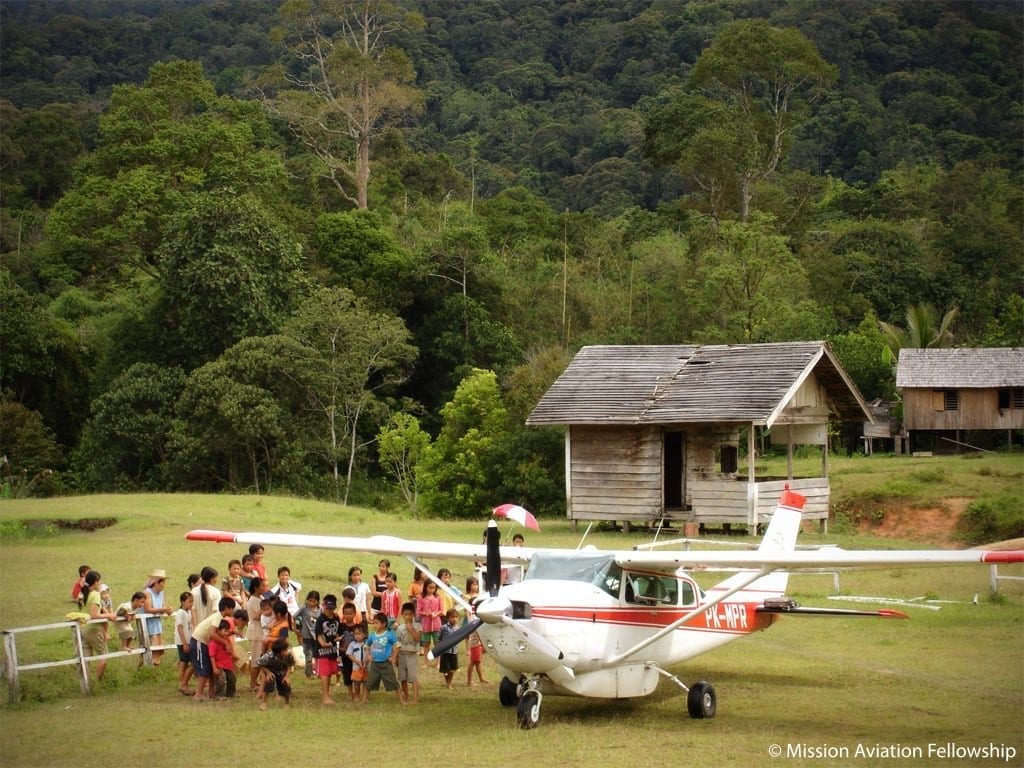A fascination for flying combined with a passion for spreading the Gospel to the uttermost parts of the earth is a special calling for those who desire to be aviation missionaries. Dr. Bob Green surrendered his life to serve the Lord Jesus Christ by preaching the Gospel at a very early age. “As a boy, I dreamed of becoming a pilot.” Then, while in Bible College, he realized that aviation could be a valuable tool for fulfilling his calling as a missionary preacher.
Aviation missionaries often start with a calling similar to that of Dr. Green, who serves as the Hispanic Ministries Representative and Aviation Director for Baptist International Missions (BIMI). Aircraft have been used for over 40 years as a valuable tool by BIMI missionaries, enabling them to aid in evangelizing isolated peoples and establishing indigenous churches. Their efforts span the globe from Africa to Central America, the Islands of the Caribbean, and remote villages in the far north of Alaska and Canada.
Dr. Green’s sincere desire is that Christians be challenged to “delight themselves in the Lord” and allow Him to make their desires a reality for the good of others and the glory of God the Father.
In a Day’s Work
The stories and experiences of aviation missionaries are varied and often astonishing. They are equipped to be good mechanics and pilots and trained for the mission field. We may not hear much of their efforts back home in the U.S., but they are working on the front lines filling capacities of humanitarian relief operations, bringing the Gospel to people who would not otherwise have access, performing medical evacuation flights, transporting Bibles into people groups, and providing transport for translators to build and service the needs of the local church in the most remote corner the world.
Take, for instance, the recent report in Ethnos360 Aviation Journal about the first ever R66 helicopter in Papua, New Guinea beginning service. “Flying into the swampy region where the Iski people live, Ethnos360 Aviation pilot Josh Verdonck, accompanied by check pilot Brian Pruett, carried two of the missionaries who had planted the Iski church several years ago. A few hours later, they shuttled more missionaries — this time, mature Iski believers taking the gospel to an unreached Iski village.”
The next day, they checked the helipad of a people group that had been asking for missionaries for seven years. After he verified the landing zone would work, he flew a team to Kuyu for meetings. “The Kuyu team faces some long hard years ahead to teach the Gospel clearly. As team member Michael LeBlanc says, ‘[The Kuyu] have heard stories of God. However, it’s via secondhand stories that are lost in oral tradition and distorted by their own worldview. The confusion has trapped them into rituals mixed with animism that couldn’t be more opposite from the Gospel.’ Now the team has an open invitation to teach the truth. ‘It is an incredible privilege and worth everything we have left behind,’ says Michael.”

Making an Impact
How effective is aviation missionary work? It’s hard to calculate, but as long as dedicated men and women serve to take God’s Word to the farthest reaches of the earth, the impact on a spiritual level is immeasurable. Aviation mission organizations reach out to touch the lives of the millions of people who live in isolation. The love of Christ impacts lives by bringing help, hope, and healing through aviation.
Mission Aviation Fellowship (MAF) has used aviation for over 75 years to share the love of Jesus Christ with isolated people who have not yet heard the Gospel. To give you an idea of how much work is being done through missionary aviation, here is the yearly impact as stated in the MAF 2019 annual report:
- 18,532 Flights
- 544 organizations served
- 55,100 passengers transported
- 500 airstrips/water landing sites served
- 5,603,860 pounds of cargo delivered
- 1,457,833 nautical miles flown
- 210 years of travel times saved, which can be used for productive ministry work
- MAF staff supported 55 Bible translation projects and showed the “JESUS” film 166 times in refugee camps and remote villages.
- Fighting Ebola in Africa: 19 flights, delivering 1,553 pounds of vaccines and 23,650 pounds of medical supplies.
- MAF’s 47 airplanes are often the only safe and reliable means of transportation for ministry activities that can reduce an all-day trek by foot to a mere 12-minute flight.
- Every 14 minutes, in some of the most remote places on earth, a MAF aircraft takes off or lands.
- Every flight hour saves five days of travel by foot or slow, arduous ground transportation, greatly maximizing the ministry of missionaries and indigenous evangelists.
- Each day, MAF transports hundreds of passengers, including evangelists, teachers, medical personnel, indigenous pastors, relief personnel, children, and those who are critically ill or in need of emergency medical help.
Earning Wings
A variety of aviation ministries, colleges, universities, flight schools, and places teach maintenance training from a Christian perspective. Moody Aviation is known for its missionary aviation school and has trained and equipped thousands of pilots and mechanics for the rigors of the mission field for over 70 years. The Bachelor of Science in Missionary Aviation Technology degree program by Moody Aviation provides Bible instruction and general coursework in addition to the technical aviation training required to graduate.
In a promotional video on their website, Amelia Salas, a Moody Aviation Student, shared, “Jonathan and I will be serving in Venezuela, in the indigenous tribes, all the missionary organizations that were there before got booted out, and so local pastors have come together and created an organization. And Jonathan and I will be the first pilots to fly there as missionary pilots and to find missionaries to translate the Bible into native tongue. Moody is doing a great job in preparing us to be missionary pilots because we are doing the day-to-day work that a pilot and a mechanic would do on the actual mission field. And when you see the impact on real life, go into those tribes in the jungle and see they don’t have a Bible in their native tongue, like that is what we are living for. That is what we are doing this for, and we can be so excited to know we are enabling people to do that.”
Jay Bigley, Chief Flight Instructor, says, “My hope for Moody Aviation graduates is that they are impacted with the Gospel as they are training to become a missionary mechanic and/or pilot and that as they go that they would have eyes to see and ears to hear Christ’s voice and create a heart to follow wherever He leads them around the world for service.”
For more information on aviation missions and ministries visit https://aviationministries.com/.

Aviation Missionaries Related Articles
==> Also read “Send the Light“
==> And read “Infinite Greatness of God“



